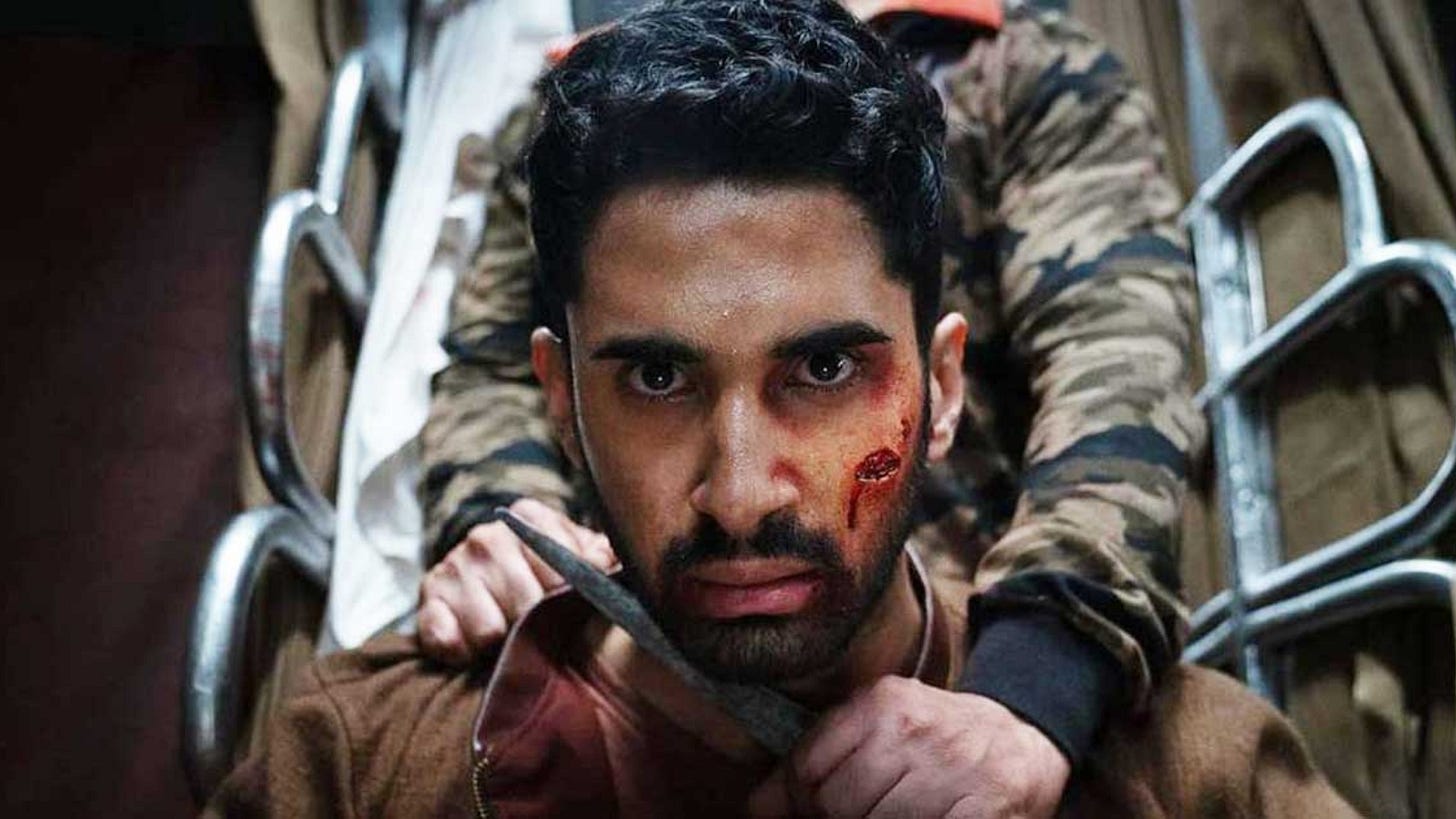'Kill' Is Anti-fun
Finally, a movie that blends the ridiculousness of 'Cliffhanger' with the tone of 'Schindler's List.'
The original Die Hard - maybe the best action movie ever made - pits a lone cop against a group of terrorists who have taken over a high-rise… the twist being that they’re not really terrorists, they’re thieves posing as terrorists specifically to distract from their true intentions. But in both the original screenplay and the novel on which the movie is very (very, very, very) loosely based, Roderick Thorp’s Nothing Lasts Forever, this was not the case: the bad guys were authentic terrorists. It was director John McTiernan who brilliantly insisted on the change. His reasoning? You can’t make a fun movie based around terrorism, because it’s too serious of a subject. Had McTiernan not turned Die Hard into a heist movie, it would have been a far grimmer affair than the iconic, wildly entertaining film we all know and love.
For his distinctly Die Hard-inspired new movie, Kill, the director Nikhil Nagesh Bhat has taken the inverse approach: what might have been an adrenaline-fueled romp becomes a goddamn Greek tragedy. Which would be fine, if Bhat were a) a competent storyteller or b) an artist with something on his mind, but he’s neither. I’d compare him to Zack Snyder, but he doesn’t even have Snyder’s visual flair.
The plot of Kill is basically “Die Hard on a train,” which means it’s basically Under Siege 2: Dark Territory: there’s a military commando, Amrit (Lakshya), with his closest friend, his betrothed, and her family, and then a bunch of robbers board the train and take everyone hostage, and it’s up to Amrit to save the day.
The characters in Kill are barely one-dimensional, and the structure is bizarre - not in a fun, challenging, Christopher Nolan kinda way so much as in the way structure goes out the window when a little kid makes up a story as they go along. There’s a flashback about forty minutes in that feels like a child saying “Oh yeah also I forgot to tell you this part before.”
Point being, narratively, Kill is DOA. And yet, as the conflict initially begins to ramp up, it seems as though the movie might prove to be dumb fun, because the action is so cartoonishly violent. If you’ve ever wondered how many different ways there are to fatally stab someone, Kill is here to lay them all out for you, in graphic detail, and to make sure of this, the hero is given a whopping 40 baddies to murder (John McClane only had to fight a baker’s dozen).
But then two major problems arise.
The first is its setting. The train on which Kill is set is extremely narrow, which limits the amount of movement possible within the fight scenes; a great action director might have found a way to make this work to their advantage, but Bhat does not. Maybe even worse, he’s terrible at establishing where every character is situated geographically in relation to one another, and every single car on the train appears to be identically decorated. In other words, there’s nowhere to go, nothing to look at, and no way to tell where the hell anyone is. Under Siege 2 is by no means a masterpiece, but at least its director, Geoff Murphy, found ways around these potential pitfalls.
The second, far more severe problem is the completely humorless tone.
I admit that sometimes, Bhat, who also co-wrote the screenplay with Ayesha Syed, takes his own bad story so seriously that it becomes inadvertently funny. For example, all of the bad guys are family, so every time the hero kills one of them, a bunch of the others scream and weep and, when time allows, lovingly cradle the corpse (they also often shout things like “HOW COULD ANYONE DO THIS?!?!”, as though they weren’t just violently murdering innocent people themselves). In Die Hard, two of the thieves are brothers, and so when McClane kills one of them, the conflict becomes personal for the other; it’s as though Bhat noted this and thought it would be a good idea to give that basic dynamic to every villainous character in his movie.
But, once more, he missed an important element of Die Hard: the surviving brother becomes ANGRY, not sad, because sadness over the loss of a family member, like terrorism, robs the whole thing of its entertainment value. It is kind of droll to see 30 grown men all weeping because someone put a knife through their uncle’s skull, but it’s still 30 grown men all weeping, y’know?
This unrelentingly funereal vibe permeates all aspects of the film. If Kill had any point to it, that might not be so bothersome; but it doesn’t. It’s like someone took the script for Passenger 57 and decided to approach it with the same level of seriousness they would for Schindler’s List.
A recent interview with Bhat only confirms that he believes he’s made a Shakespearean saga, not a very silly fantasy film:
“As the [bandits] start losing people, they start crying and they feel the same kind of emotion the protagonists were feeling in the first half of the film. In that way, I wanted the audience to rethink who to root for.”
Unfortunately for Bhat, Kill is so lousy the only thing the audience will root for is the closing credits.




I didn't hate this one nearly as much as you did.
I watched it at TIFF's Midnight Madness though. That crowd is a bit wild. Hooting and hollering with each felled villain. It definitely hits different in that setting.
And yeah, if the hope was to avoid the laughs - it failed in that regard. There was a lot of that in the theatre.
Here's hoping the remake improves upon what they had here.